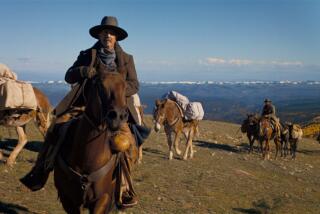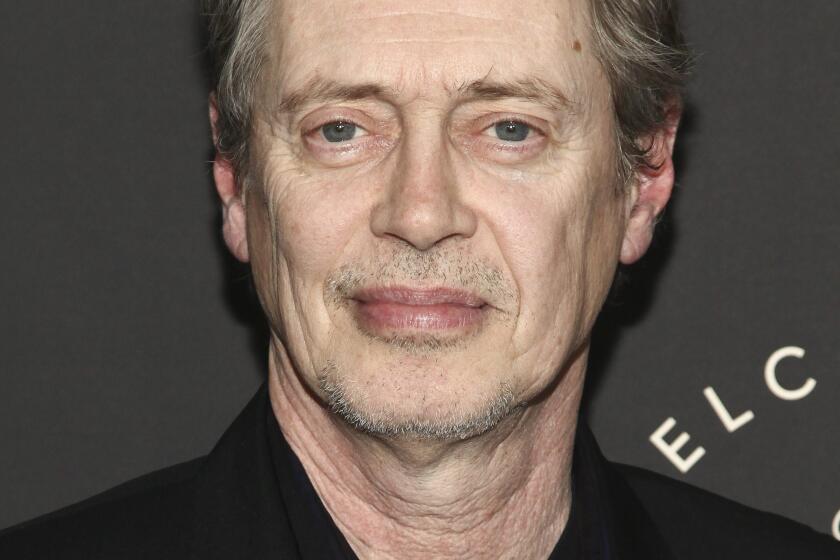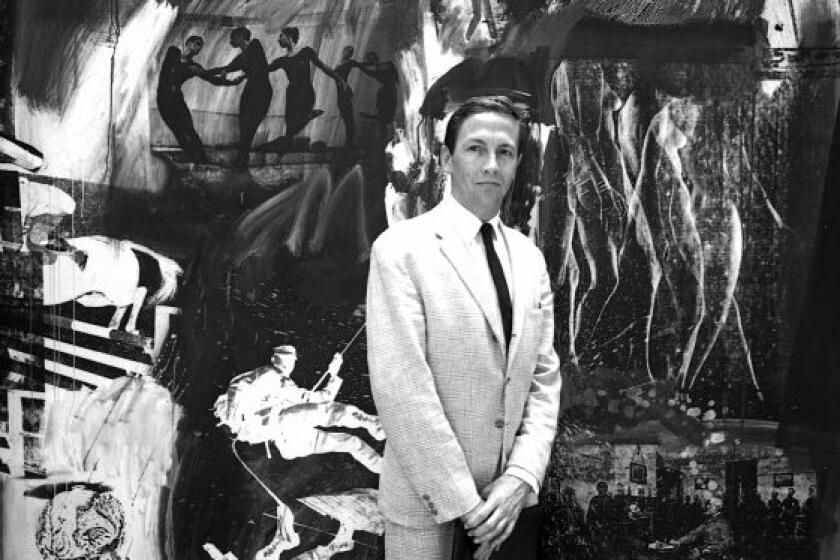In stores now: a fantasy face-off
Filmmakers George Lucas and Peter Jackson both have beards, wire-rimmed glasses and masses of thick hair. Their respective films, “Star Wars: Episode II Attack of the Clones” and “The Lord of the Rings: The Fellowship of the Ring,” are fantasies filled with otherworldly creatures, exploring age-old themes of good and evil. Both directors use cutting-edge digital technology to bring their colorful universes to life, and both tapped veteran actor Christopher Lee to play the bad guy.
Lucas and Jackson also are the stars and the guiding forces behind the DVDs of their films, which arrive today in lavish collector’s sets. But that’s really where the similarities end. Lucas, who relies almost totally on digitally created effects, sets and characters to tell his story, is quiet, reserved and has an almost analytical, scientific approach to filmmaking. Jackson, who uses computer-generated imagery in “Lord of the Rings” but doesn’t rely on computers, is lively, passionate and comes across as almost a real-life hobbit.
Their attitudes and personalities are reflected in their films. “Star Wars” has some terrific action sequences, but the dialogue and performances from his actors are leaden and uneasy.
It’s ironic that the most lifelike performance in the film is from the digitally created Yoda. Jackson’s “Lord of the Rings” features wonderfully written scenes, spectacular action sequences, lovely performances and a sense of wonderment that “Star Wars II” lacks.
Even so, the digital edition of “Star Wars: Episode II” (Fox, $30) should more than satisfy fans of the series, as it is filled with documentaries, deleted scenes and audio commentary.
The two-disc set, available in wide screen or pan and scan, features a terrific transfer from the original digitally shot film and fact-filled commentary from Lucas, producer Rick McCallum, picture and sound designer Ben Burtt, Industrial Light & Magic animation director Rob Coleman -- who is the most interesting of the lot -- and visual effects supervisors Pablo Helman, John Knoll and Ben Snow.
The second disc features eight deleted scenes, including Padme (Natalie Portman) addressing the senate; an extended arrival sequence between Anakin (Hayden Christensen) and Padme on Naboo; a visit by Padme and Anakin to her parent’s house; and Anakin and Padme on trial. Lucas and McCallum talk about why each scene was cut. Truth be told, most of the scenes between Anakin and Padme are excruciatingly dull.
“From Puppets to Pixels: Digital Characters in Episode II” is a fascinating look at the creation of digital characters for the film and the challenges of creating Yoda digitally for the first time. “State of the Art: The Revisualization of Episode II” explores the role of animatics -- sort of a digital storyboard -- in creating the film. And “Films Are Not Released: They Escape” looks at the complicated sound design.
Three slight featurettes examining the story line, action scenes and love story are woefully slick. But a 12-part documentary that originated on “starwars.com” is much more inspiring, especially the featurette on the debate between the use of digital cameras versus film cameras.
There also are a plethora of production photos, posters, trailers, TV spots, DVD-ROM goodies and a sly mockumentary, “RD-D2: Beneath the Dome.”
But the DVD can’t hold a Jedi light saber to the four-disc “The Lord of the Rings: The Fellowship of the Ring” (Platinum series extended edition ) from New Line ($40). It just happens to be one of the best digital collections ever released. The main caveat is that you’ll need to carve out a few days of your life to get through the collection, which features an expanded 3 1/2-hour version of the award-winning adaptation of J.R.R. Tolkien’s beloved novel, four audio commentaries and six hours of documentaries and other extras.
In August, New Line released a two-disc set of “Lord of the Rings,” but because Jackson was deep into post-production on “The Lord of the Rings: The Two Towers” in New Zealand, he wasn’t available to do the special edition of the film until “Towers” was completed.
New Line and the producers probably didn’t mind having a second “Fellowship of the Ring” collection to offer in time for the holiday season.
The first two discs include the expanded version of the film -- 30 minutes longer than the theatrical version. But the extra half-hour doesn’t seem to pad or weigh down the film. In fact, it makes the viewing even more enjoyable.
There are several new scenes, including a sweet sequence directly after the prologue in which Bilbo Baggins introduces Hobbiton and the hobbits and another in which Aragon sings of his lost love. Several scenes are expanded, including one in which Gandalf and Frodo talk in the cart before Bilbo’s birthday celebration.
Jackson and his co-writers, Fran Walsh and Philippa Boyens, supply lovely commentary on one track, and 10 of the actors -- including Elijah Wood, Ian McKellen, Sean Astin and Christopher Lee -- are lively and fun on yet another commentary track.
For those interested in the technical aspect, the design team and the product/post-product team are featured on their own separate tracks.
The third disc, “From Book to Vision,” includes documentaries on Tolkien; the adapting and planning of the film; the designing and building of Middle-earth; the use of pre-visualization and rudimentary animation (called animatics); a behind-the-scenes glimpse at Jackson’s Weta Workshop, where all the weapons, armor, creatures and miniatures were made; an interactive map of Middle-earth; an interactive location map of New Zealand; galleries of art and slide shows with select commentary by the artists; a tour of the expansive wardrobe department; footage from early meetings; and even a test reel in which Jackson plays the role Bilbo Baggins.
The fourth disc, “From Vision to Reality,” includes an amusing look at a day in the life of a hobbit; a chronicle of how the size difference between the hobbits and the elves was accomplished on screen; behind-the-scenes photographs; sound design demonstration; an editing demonstration; and footage from the various premieres of the film.
More to Read
Only good movies
Get the Indie Focus newsletter, Mark Olsen's weekly guide to the world of cinema.
You may occasionally receive promotional content from the Los Angeles Times.







